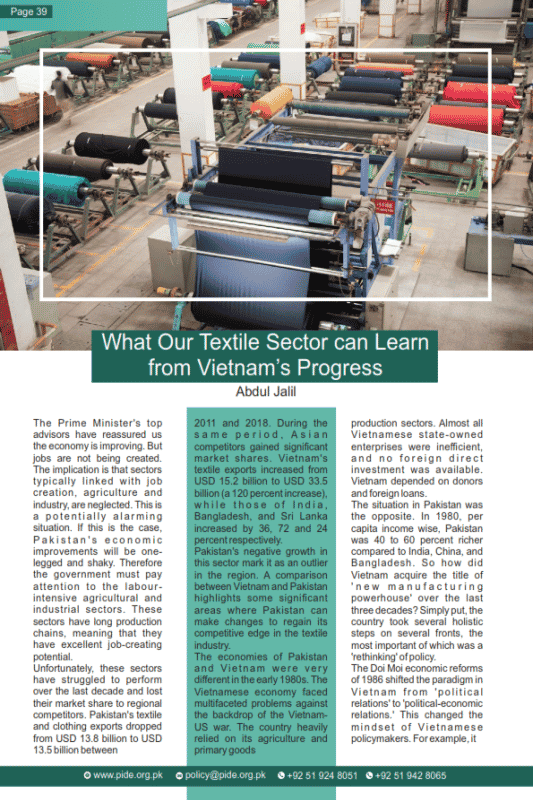What Our Textile Sector can Learn from Vietnam’s Progress (P & R Vol.1 Issue 3)
The Prime Minister’s top advisors have reassured us the economy is improving. But jobs are not being created. The implication is that sectors typically linked with job creation, agriculture and industry, are neglected. This is a potentially alarming situation. If this is the case, Pakistan’s economic improvements will be onelegged and shaky. Therefore the government must pay attention to the labourintensive agricultural and industrial sectors. These sectors have long production chains, meaning that they have excellent job-creating potential. Unfortunately, these sectors have struggled to perform over the last decade and lost their market share to regional competitors. Pakistan’s textile and clothing exports dropped from USD 13.8 billion to USD 13.5 billion between 2011 and 2018.




